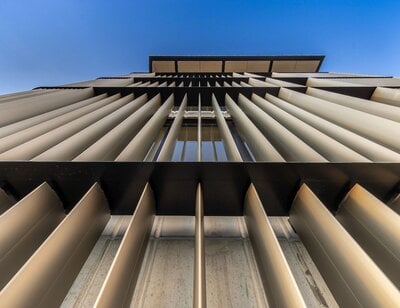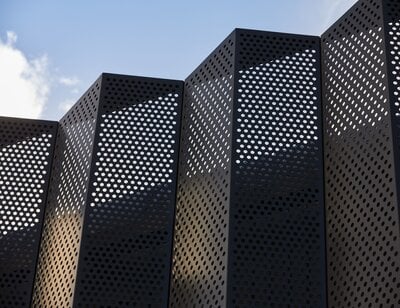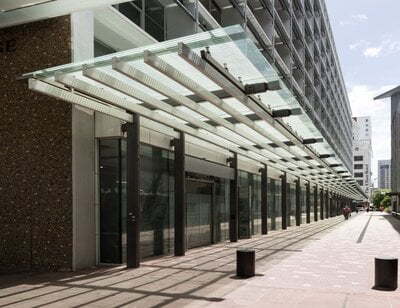The global built environment accounts for 14.4 metric gigatons of CO2 equivalent (GtCO2e) of emissions around the world annually. 26% of all GHG emissions come from the built environment, as do 37% of combustion related emissions. The emissions from the construction and operation of the built environment are so significant that 194 nation states and the European Union signed up to the Paris Agreement. A multilateral approach on such a global scale is incredibly rare, given the ability of most countries to disagree with themselves.
There are implications for us here in New Zealand, as a signatory of the Paris Agreement, and also for us here, down at the bottom of the world in Invercargill. Decarbonising the built environment has moved from ‘the right thing to do’ to an ‘absolute must-do’.
But what is it that we must do exactly?
New Zealand’s Built Environment
20% of New Zealand’s domestic emissions come from the construction and operation of buildings according to a report by Thinkstep. This is largely in line with the rest of the developed world (the figure in the UK is 25%) although NZ is young by comparison, with an arguably greater need for housing and an economy that is yet to reach its full potential (we hope).
Using the general guidelines that a building will last between 30 to 130 years (barring any natural catastrophe such as the Christchurch Earthquakes), 80% of the building stock expected to exist in 2050 has already been built (McKinsey & Partners). While there is much focus on the sustainability and green credentials of new buildings, unless there is a renewed focus on how those already in existence can be retro-fitted or adapted, there is little chance of meeting climate goals. The lack of energy efficiency in existing buildings is simply too great.
It’s an important delineation. Embodied carbon (related to producing and transporting building materials, and constructing buildings and structures) is more readily discussed than the emissions from operational use (related to operating and maintaining buildings and structures), yet both need to be addressed and action taken. Indeed, going beyond the building life cycle stage is similarly important, with a focus on the circular economy and the questioning of material choices, prioritising those which can be recycled and reused, such as aluminium.
There are a number of approaches which can be adopted to abate both operational and embodied emissions, yet once embodied emissions have been released, they can only be offset. Abatement options no longer exist. They do for operational emissions and given the amount of the built environment for 2050 already in existence, it could be argued abating operational emissions is more important than dealing with embodied emissions. Of course though, it’s not a case of one or the other, rather it’s a case of doing both. And it’s a case of doing both quickly.
Building Decarbonisation in New Zealand
Recognising the need for decarbonising their buildings, institutions such as the University of Auckland and the University of Otago have pledged to move to carbon zero and are actively working to abate their operational carbon emissions. Private enterprise is being encouraged to follow suit and the Government Investment in Decarbonising Industry (GIDI) Fund has NZ$1billion available to support selected projects over a 7 year period. Both recognise the need to change not only what we build for the future, also the building stock already built which will be with us in the future.
New Zealand’s emissions reduction plan specifically addresses the need to reduce embodied carbon by “supporting innovation and regulating to promote the use of low-emission building design and materials”. The use of the word regulation is a clear indication the rules are changing (or in this case, the Building Code is changing) and building decarbonisation will be a critical factor in future construction.
An ecosystem to decarbonise the built environment is being created and it isn't just being driven by the Government. End users are demanding solutions (i.e. green aluminium) from solutions providers (i.e. smelters running on renewable energy) and solution enablers (i.e. companies who manufacture using green aluminium). Which is precisely where we are able to play our role in the change.
Facades & Decarbonisation
Analysis by McKinsey Sustainability led to the identification of 22 levers that can be used to reduce operational emissions by up to 90% and embodied emissions by up to 60% for the built environment.
These levers were then categorised into four groups that roughly align with the construction process and can be applied sequentially. We’re not suggesting the McKinsey analysis is perfect, or even entirely correct, but it does provide an interesting insight and an approach for considering our own impact on the built environment.
The first of the four categories contains the Design Optimisation Levers. These levers are centred around a degree of standardisation for the sake of efficiency improvements. The theory being that smaller quantities of materials are then needed, thus reducing the resource burden and increasing manufacturing efficiency through repetition and improved workflows. To be fair, most manufacturers should seek to achieve this anyway, if only for the sake of managing costs more so than managing sustainability. We’ve successfully developed a number of standardised options that achieve the overall goals of this category, while developing the products in such a way that they can be individualised. Therefore, standard products do not need to all look the same.
The second category covers Material Substitution Levers and focuses on reducing emissions by replacing traditional materials with low-carbon alternatives. For many of our products, material substitution is not possible but that does not mean there are no low-carbon alternatives of the same material, as not all aluminium has the same amount of embodied carbon. There is a difference. The aluminium used in Insol facades is nearly all (although not completely) from green aluminium sources. This lowers the embodied carbon significantly when compared to black aluminium. Any waste is limited and recycled (read more on that here), adding to the circular benefits of aluminium as a material choice.
Category three is called On Site Improvement Levers. These levers look at reducing emissions from the construction process itself. Aside from making a construction site less complicated and hectic, there are multiple efficiencies gained from our approach of manufacturing off-site and then transporting the facade for installation. This includes fuel emission reductions from requiring less people travelling to the site, which is ‘out of town’ for our team members.
Finally, there are Process Decarbonization Levers. These are concerned with the material manufacturing stage and a reduction of emissions. For us, this overlaps with the earlier mentioned levers and sourcing aluminium that’s considered to be green.
Looking beyond the levers mentioned above, there is still more we can do. Because we think we can aid building decarbonisation even more. We have a plan to tackle one of the largest contributors to the operational emissions burden of any building. And doing so requires a completely new approach.
But for now, just remember FEDAC.








